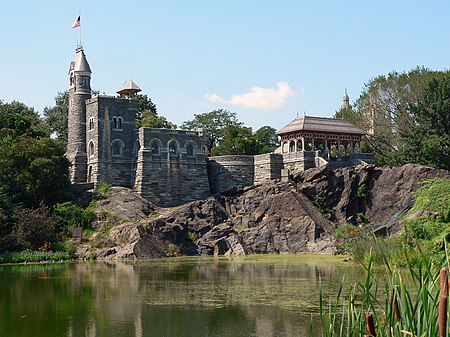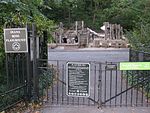Belvedere Castle
1869 establishments in New York (state)Buildings and structures in ManhattanCastles in New York (state)Central ParkFolly buildings in the United States ... and 3 more
Harv and Sfn no-target errorsNature centers in New York CityUse mdy dates from August 2020

Belvedere Castle is a folly in Central Park in Manhattan, New York City. It contains exhibit rooms, an observation deck, and since 1919 has housed Central Park’s official weather station. Belvedere Castle was designed by Calvert Vaux and Jacob Wrey Mould in 1867. An architectural hybrid of Romanesque and Gothic styles, the design called for a Manhattan schist and granite structure with a corner tower and conical cap, a lookout over parapet walls beneath it. Its name comes from belvedere, which means "beautiful view" in Italian.: 162
Excerpt from the Wikipedia article Belvedere Castle (License: CC BY-SA 3.0, Authors, Images).Belvedere Castle
New York Manhattan
Geographical coordinates (GPS) Address Nearby Places Show on map
Geographical coordinates (GPS)
| Latitude | Longitude |
|---|---|
| N 40.779447 ° | E -73.96906 ° |
Address
New York, Manhattan
New York, United States
Open on Google Maps










